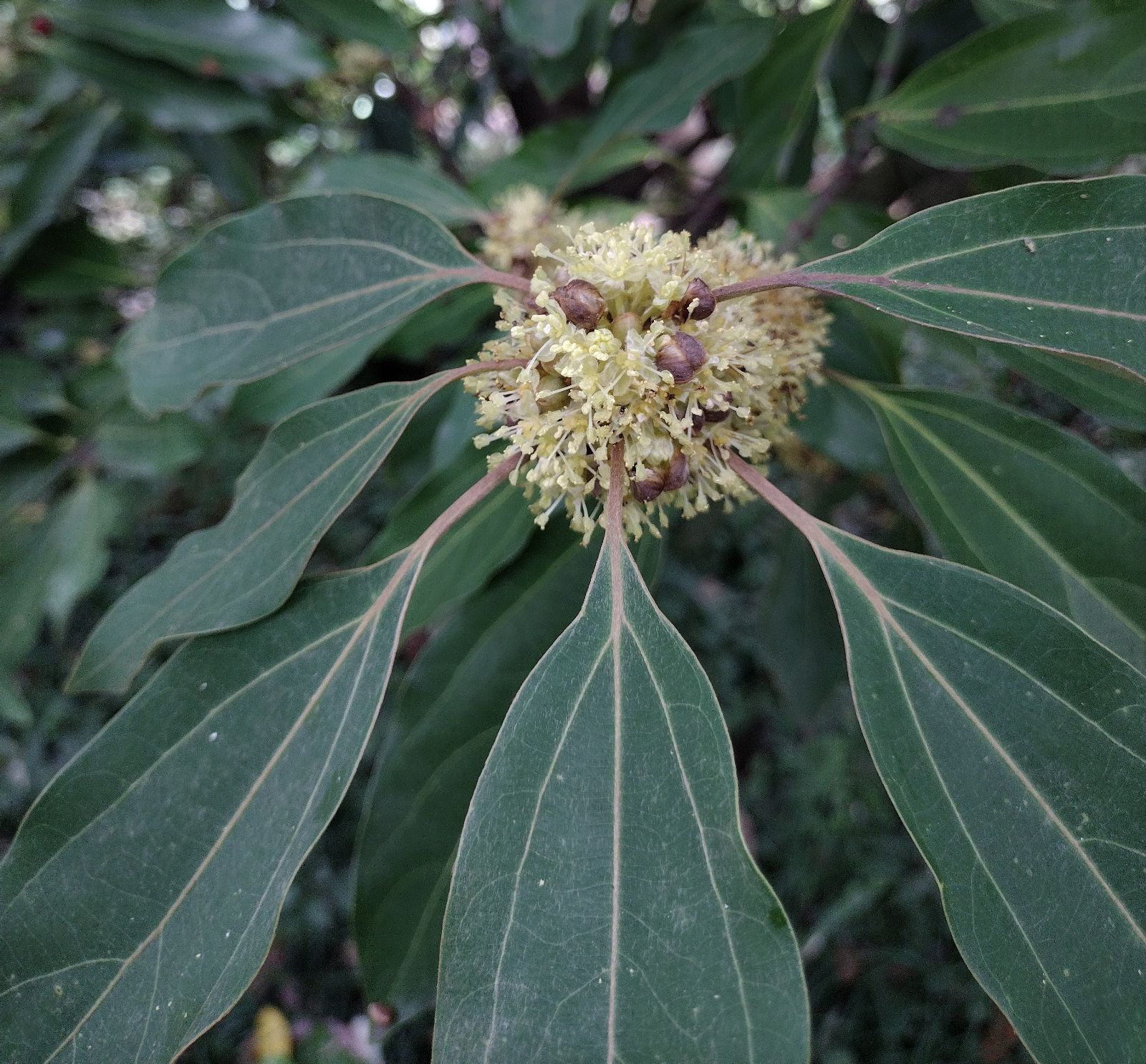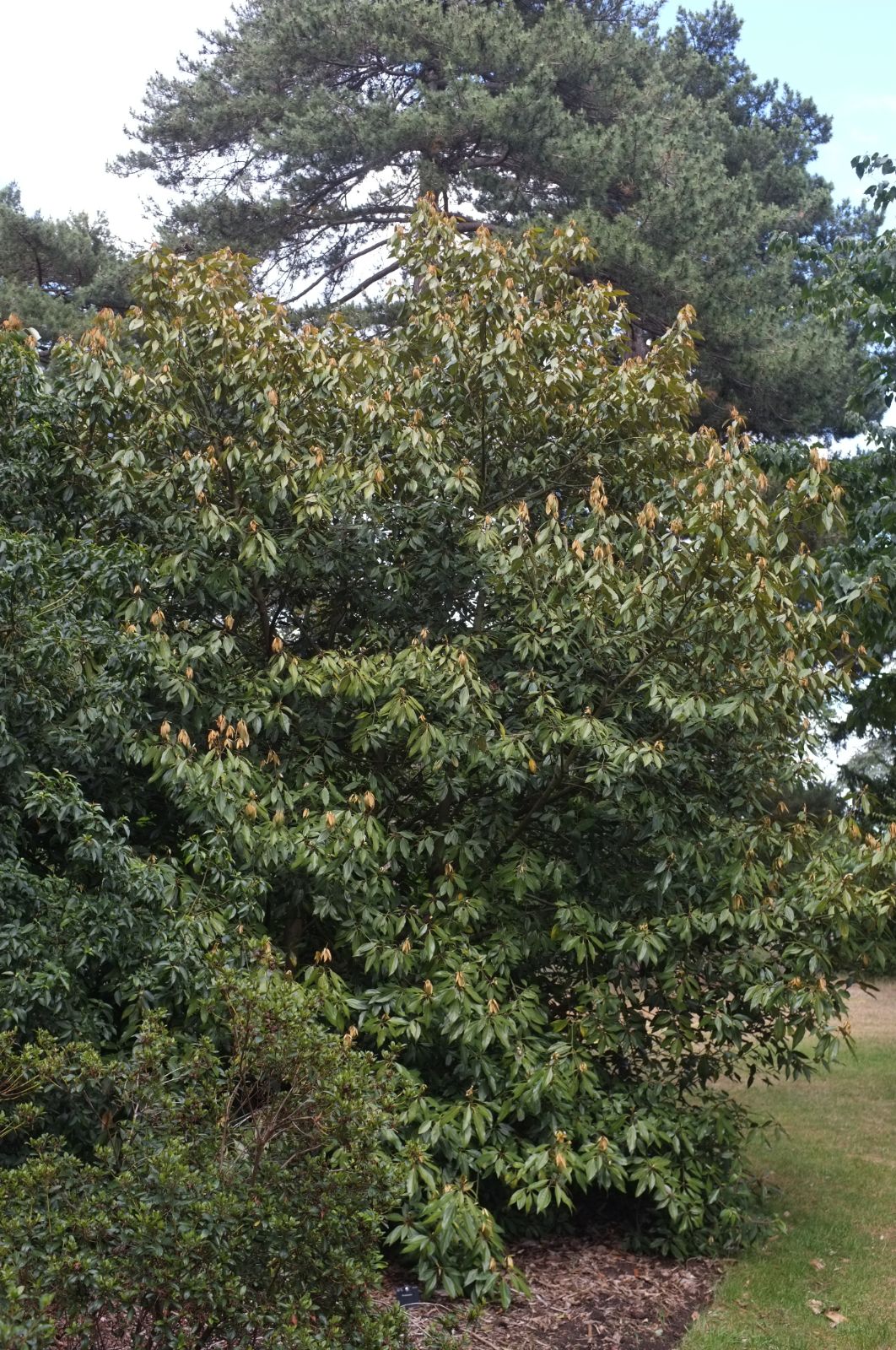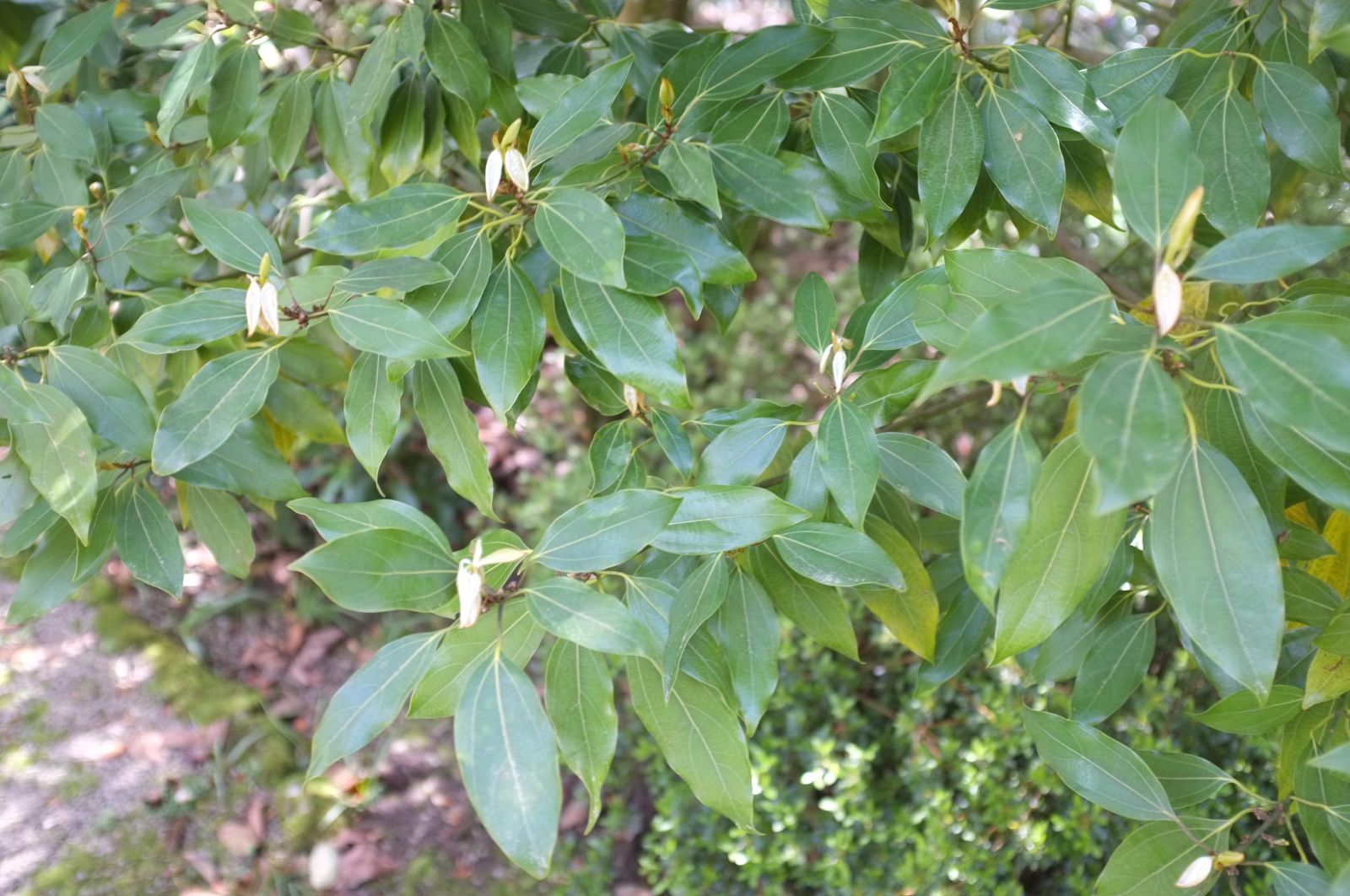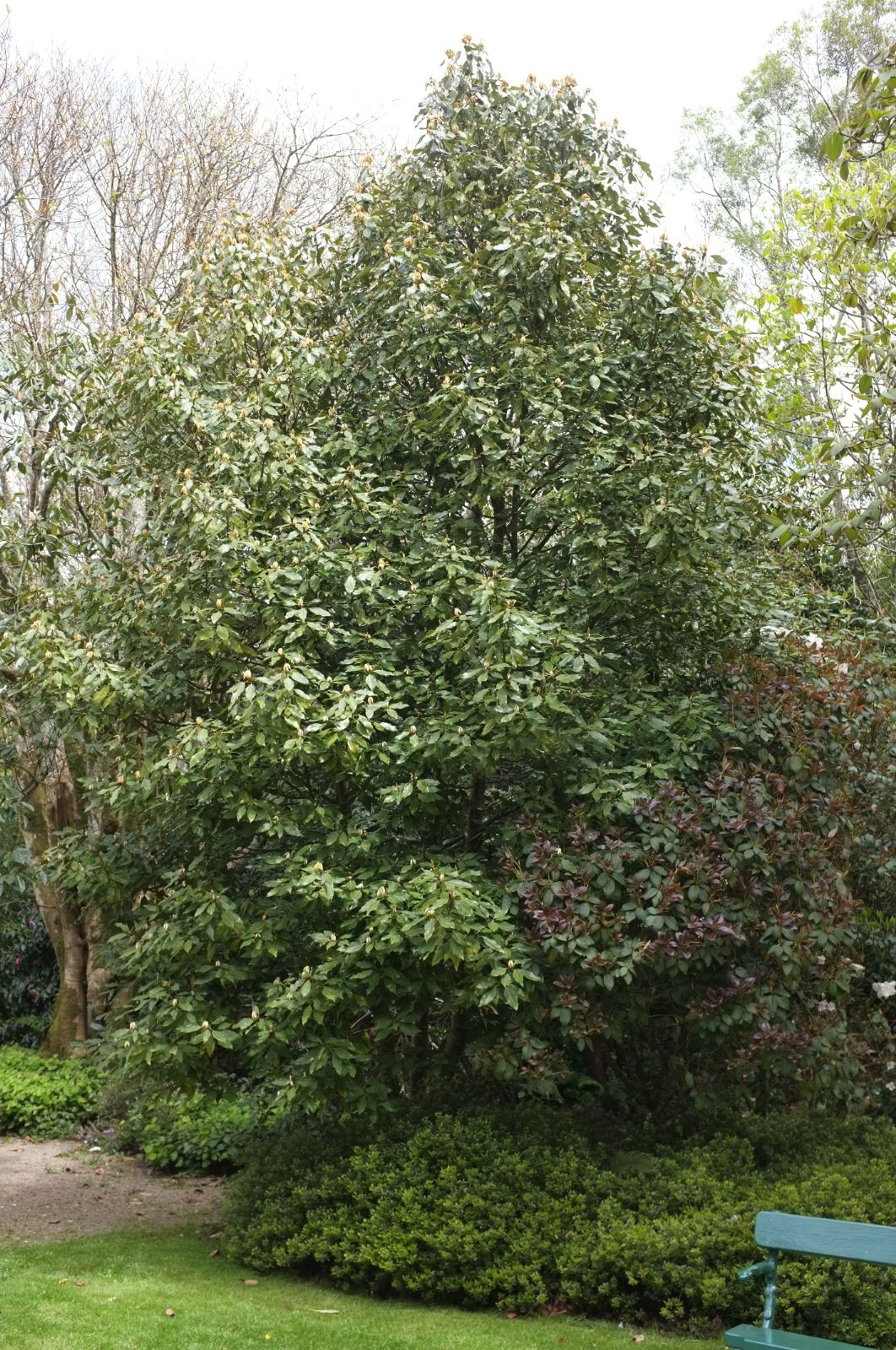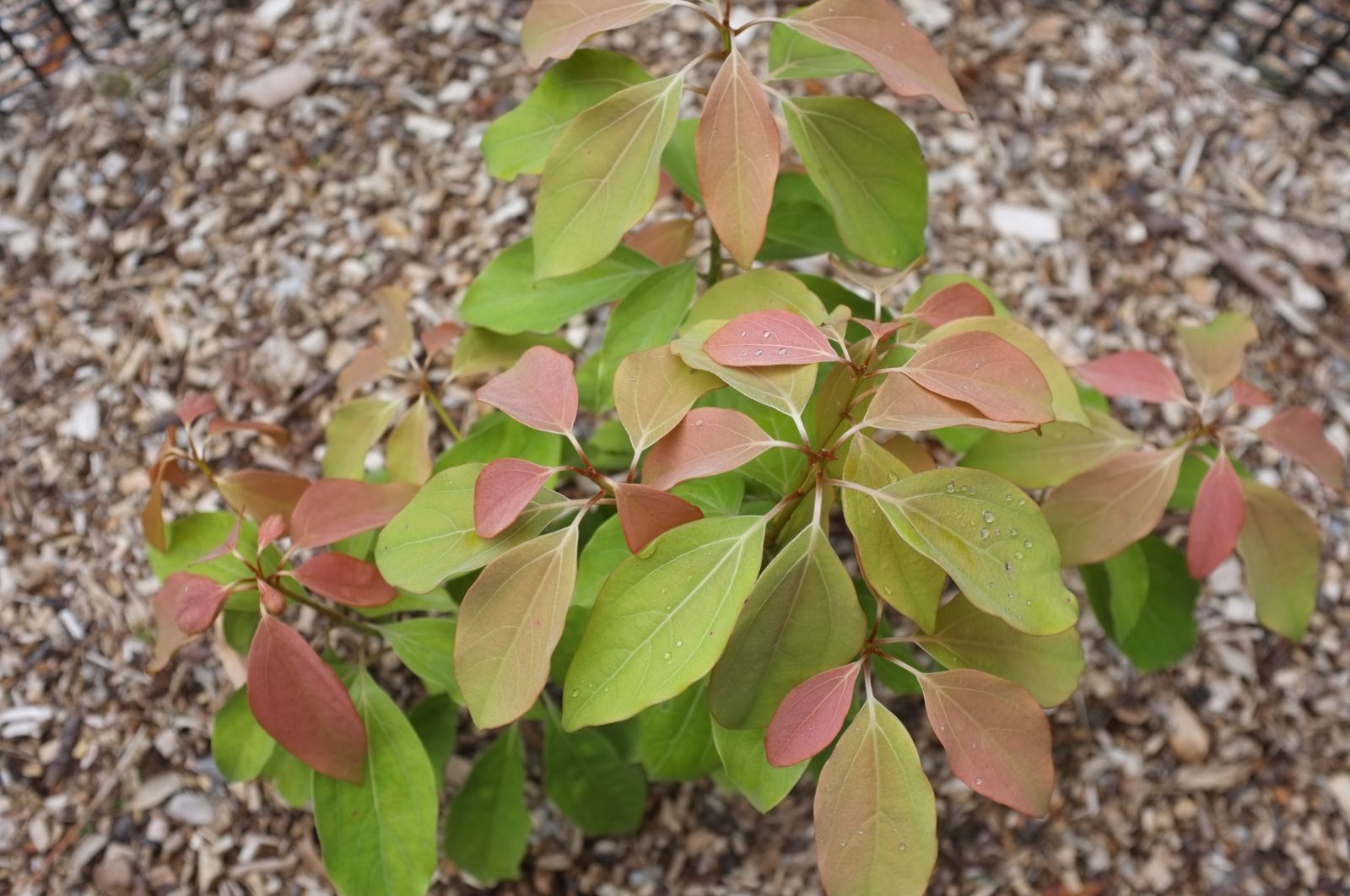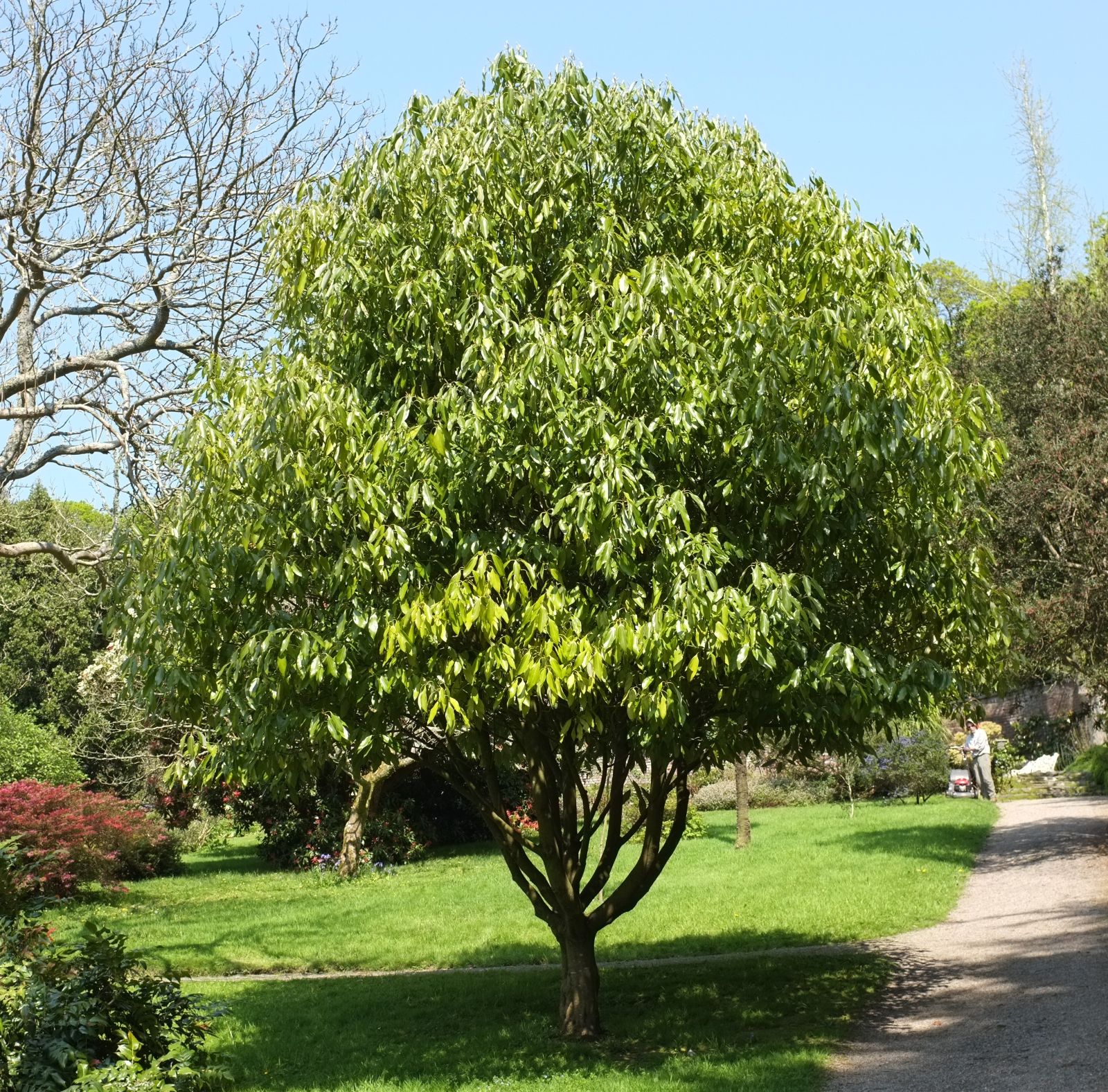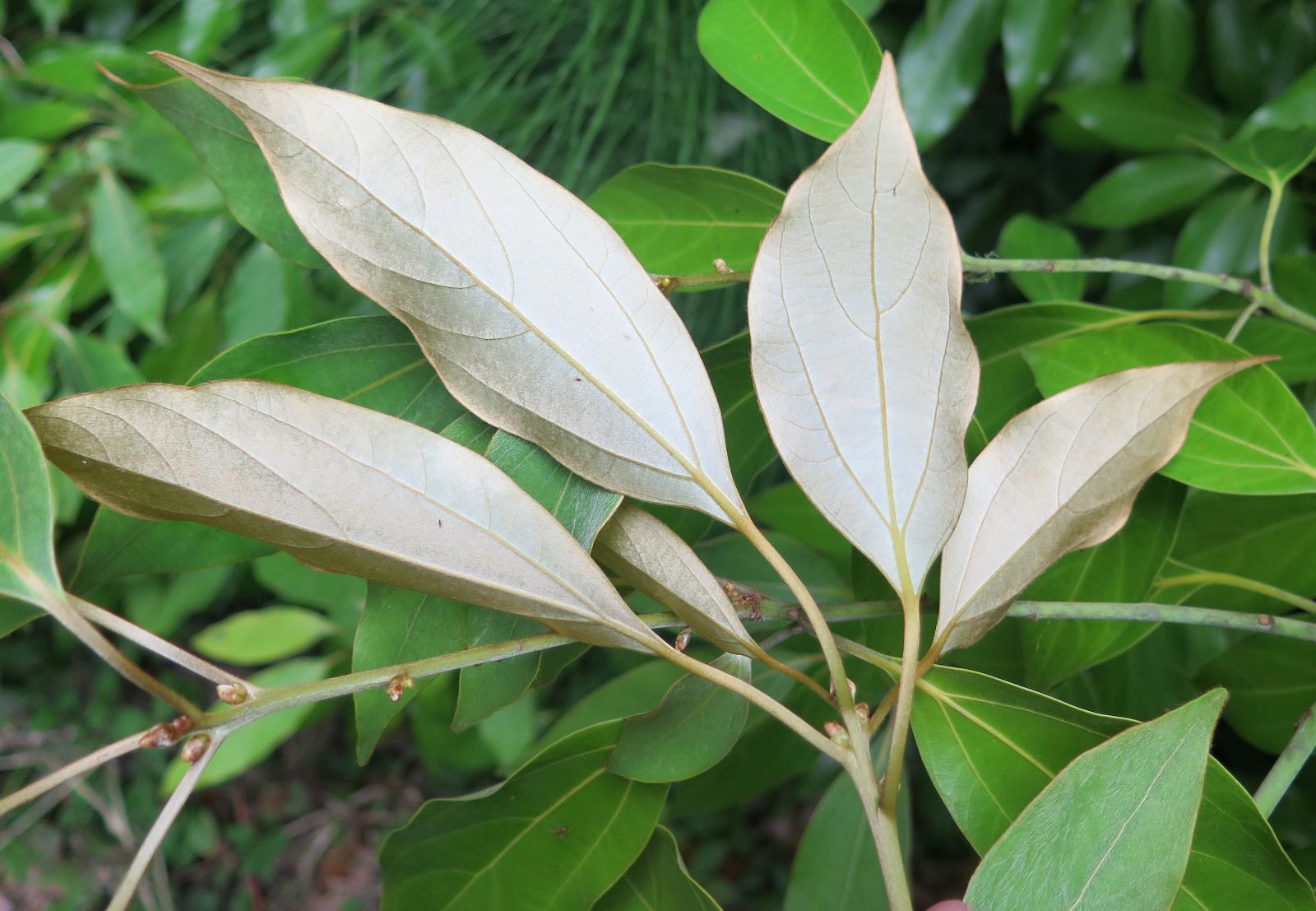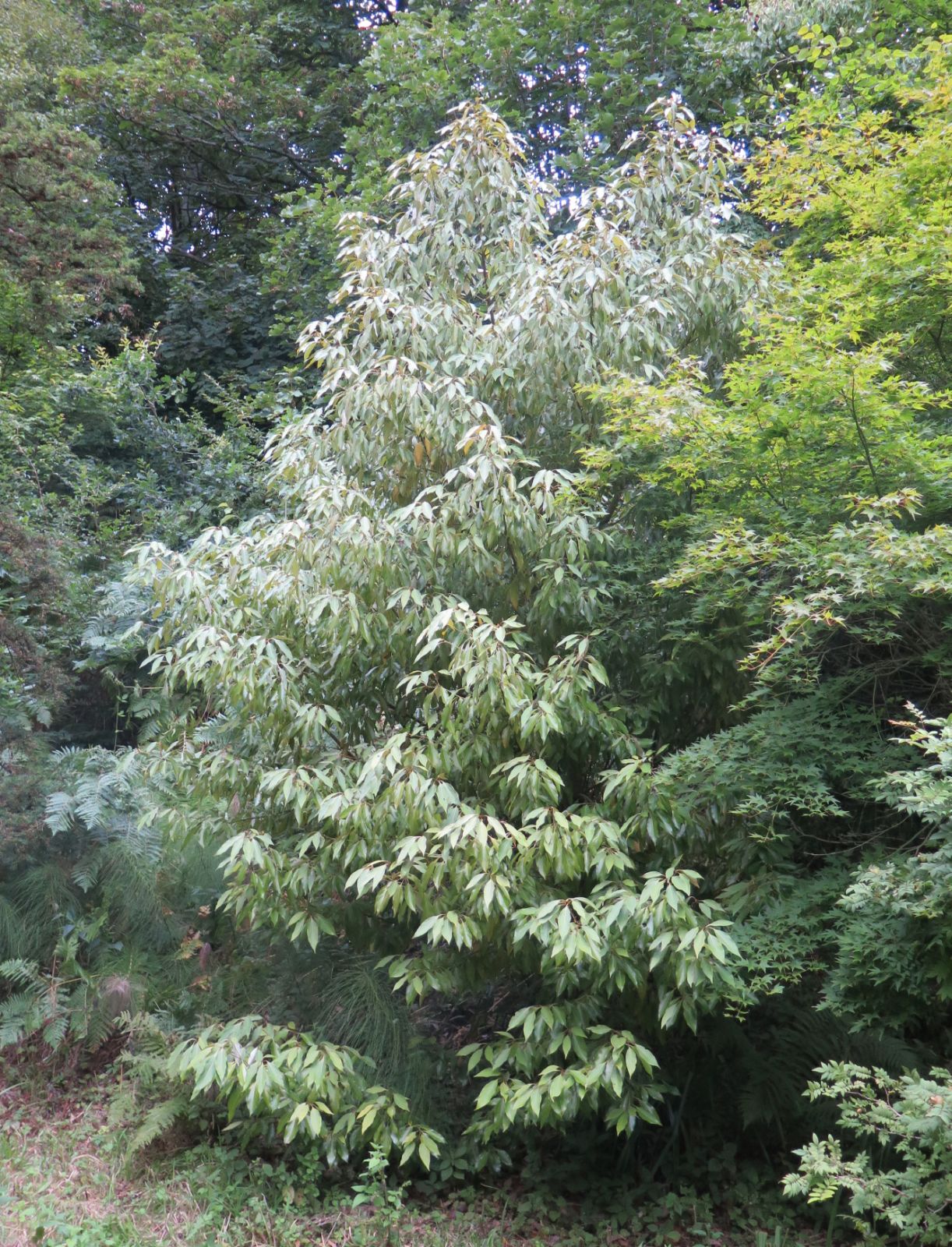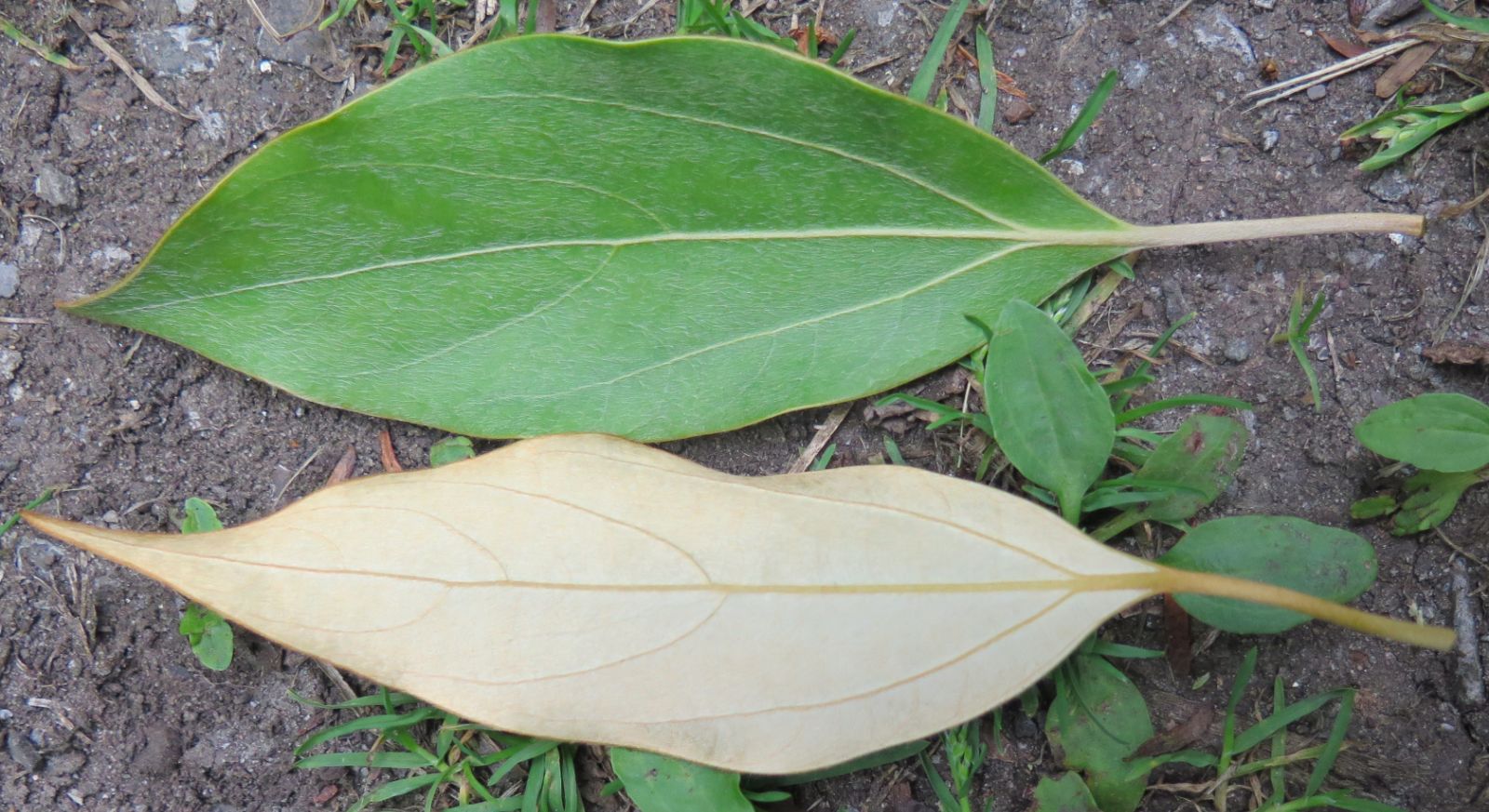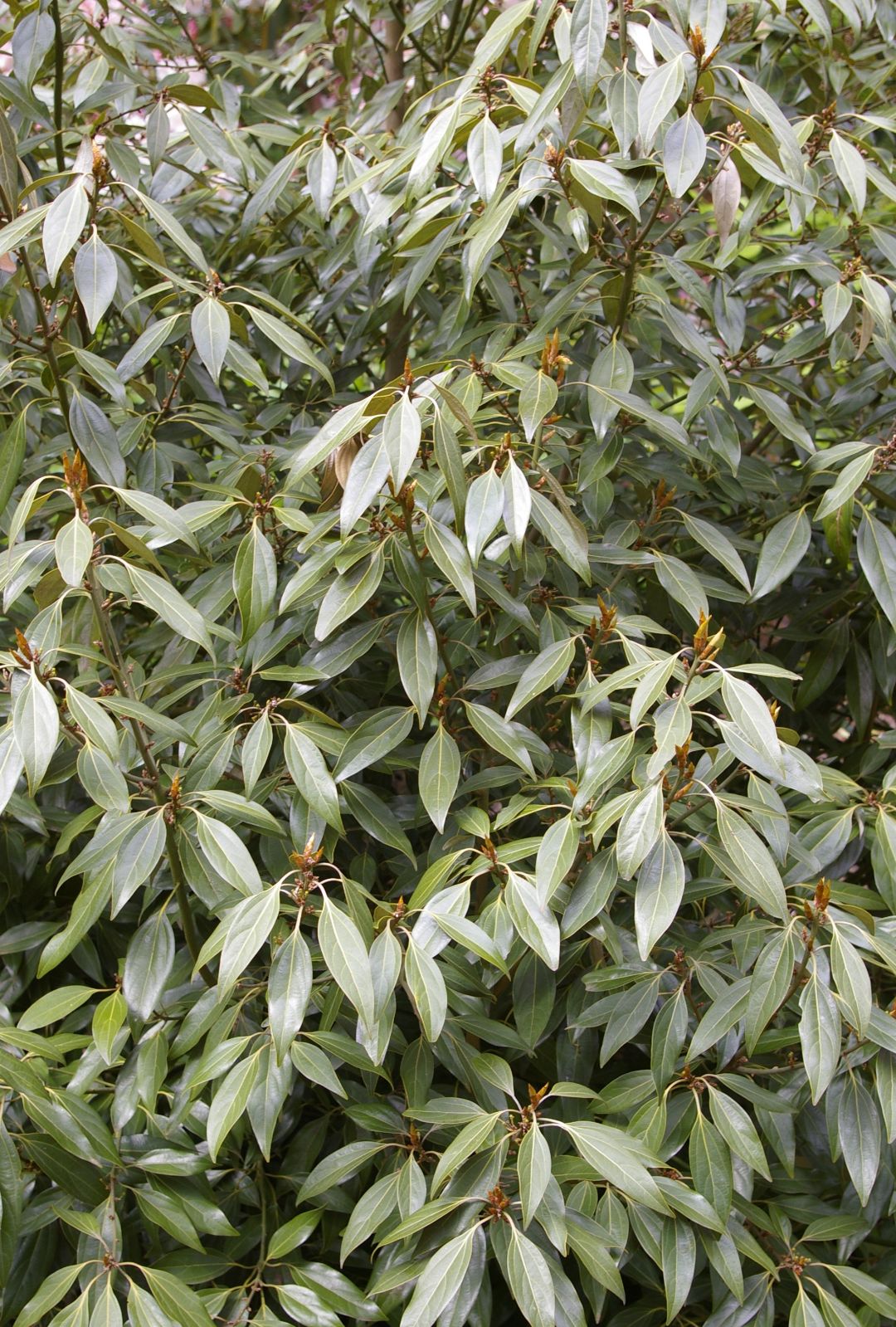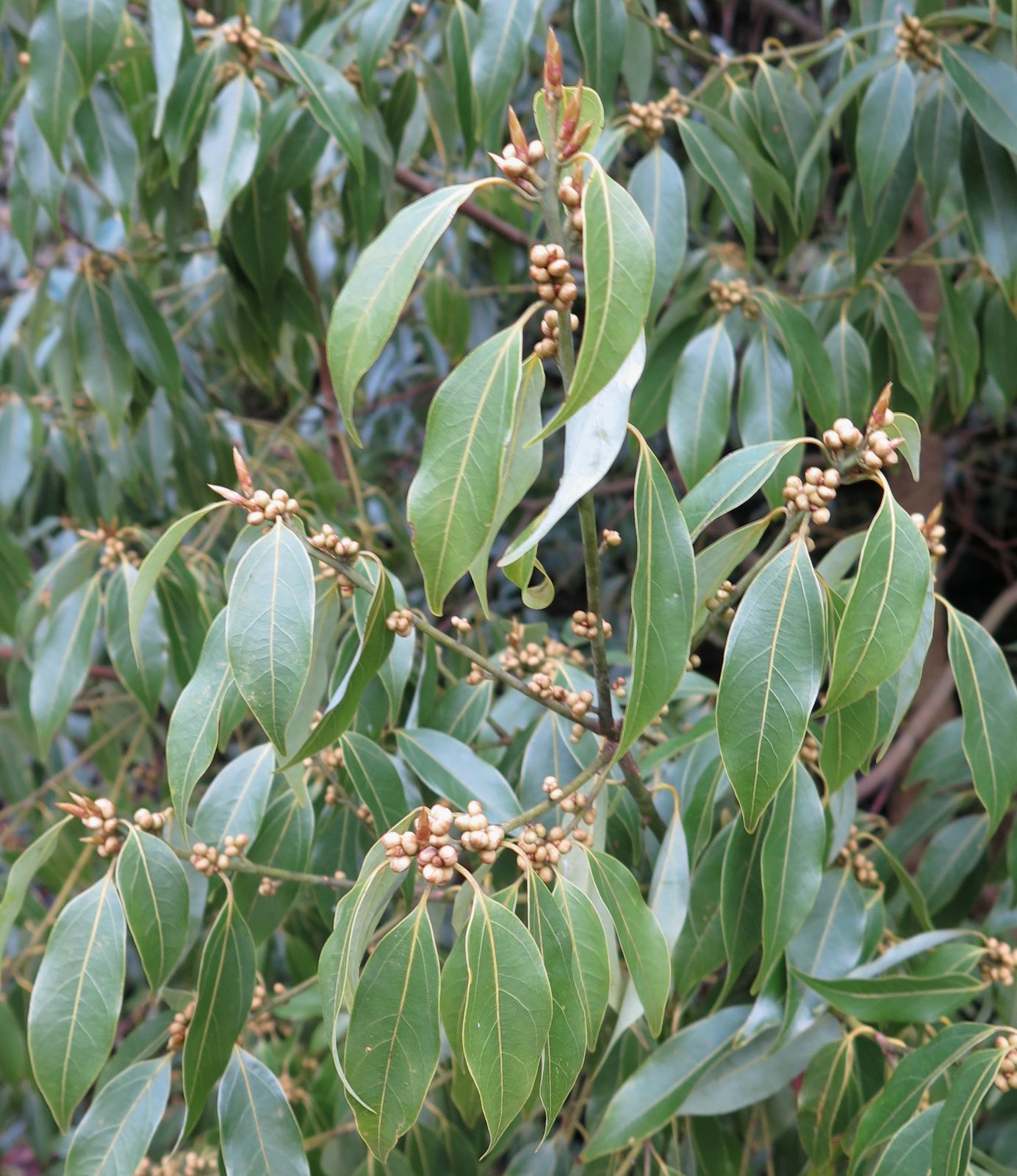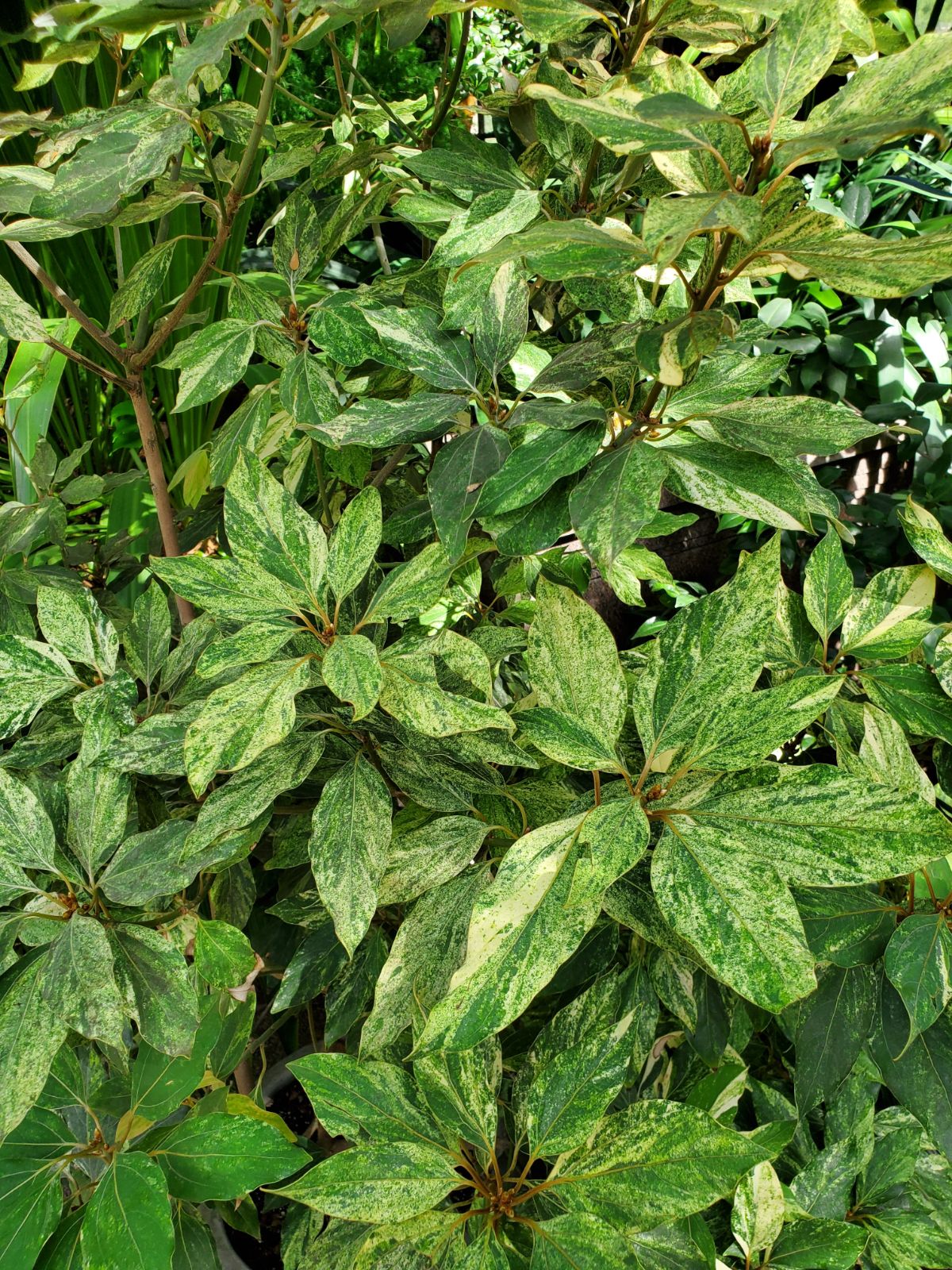Neolitsea sericea
Credits
Article from Bean's Trees and Shrubs Hardy in the British Isles
Recommended citation
'Neolitsea sericea' from the website Trees and Shrubs Online (treesandshrubsonline.
Genus
Synonyms
- Laurus sericea Bl.
- Litsea glauca Sieb.
- Neolitsea glauca (Sieb.) Koidz.
Other taxa in genus
A small evergreen dioecious tree with silky young stems. Leaves leathery, three-veined from near the base, oblong-elliptic or broadest slightly below the middle, 3 to 6 in. long, 11⁄4 to 23⁄4 in. wide, acute to acuminate at the apex, cuneate at the base, young leaves covered with silky, golden-brown hairs, when mature the upper side glabrous, the lower one glaucous and usually with traces of the juvenile hairs; petioles about 1 in. long. Flowers produced in autumn in axillary clusters. Fruits red, ellipsoid, about 1⁄2 in. long, only borne on female plants.
Native of Japan, Korea (Cheju Do Island), and China; date of introduction uncertain. It is quite a handsome evergreen with remarkable young foliage, very uncommon but apparently hardy.
A plant at Wakehurst Place in Sussex, identified as N. sericea, but perhaps wrongly, bore black fruits and had the undersurface of the year-old leaves still closely covered with a coating of silky, silvery or pale bronze hairs and appearing as if burnished. The young foliage was hairy as in N. sericea and was not produced until quite late in the summer. This plant died in 1975.

